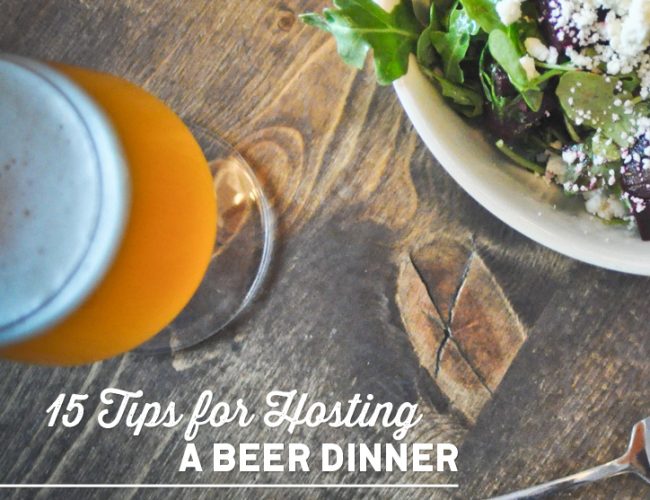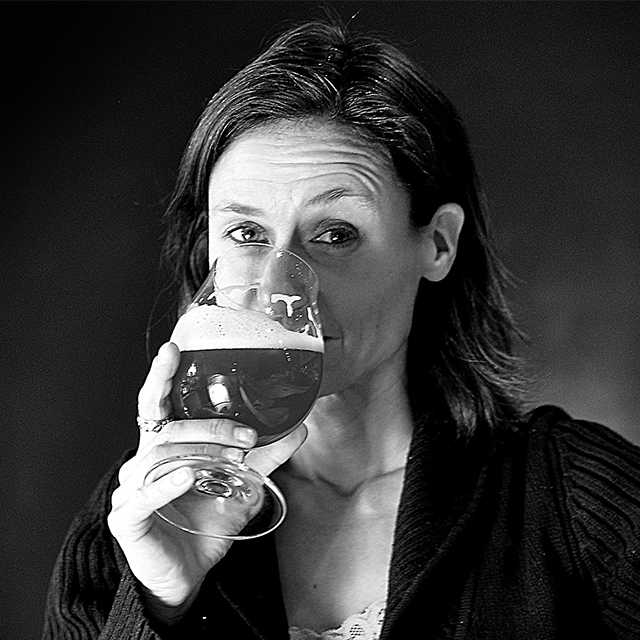What do you think is the most popular pastime surrounding craft beer—other than drinking it of course!
It may surprise you, but pairing beer with food is the number one activity tied to beer’s enjoyment. When you consciously pair, tuning into the interactions occurring between your craft beer and food, major tasting mojo magic often happens.
Hosting a craft beer dinner is a perfect way to flex your palate muscles. Hey, we’re all palate athletes in training! It also gives you the opportunity to help others experience those important aha moments that make pairing beer and food so much fun.
Craft beer is helping beer reclaim its place at the dinner table, so why not join the fun?
15 Tips for Hosting a Beer Dinner
1. Support your local brewery. A beer dinner can be a liquid-laden geography tour, so consider serving an even mix of local, regional and national craft beers from small and independent producers.
2. Pick a theme. Choosing a theme for your beer dinner not only makes it more fun, it can help narrow down the seemingly infinite pool of craft beer options. Here are some examples:
- Style specific
- Local (beers from your city or state)
- East Coast vs. West Coast
- Seasonals
- Session beers (<5% ABV)
- Beers over 50 IBUs
- Vintage beers
3. Have a taste test in advance to ensure your pairings work. Sounding out potential pairing interactions beforehand will give you more time to enjoy the dinner and your guests. Be ready to describe the different interactions you perceive with each pairing so others can relate to what you are experiencing.
4. Keep it simple. Gluttony is not glorious, so remember to have reasonable portion sizes. Three to four ounces of each craft beer is usually more than enough, especially with multiple courses.
5. Pairing is personal. Each individual experiences tastes like bitter, sweet and heat differently. Our past tasting experiences, individual/regional food vocabulary and how we each perceive flavors all play a part in our tasting experience. It’s important to remember that flavor is a complex set of perceptions. It’s based on smell, taste, sensation and experience. Want the full flavor picture? Check out “Decoding Flavor: Four Keys to Tasting.”
6. There’s not one right way to pair. There are no exact rules that must be followed. That’s why I like to say what I use are practices more than principles.
7. Finding successful pairings can be difficult. Being new to beer and food pairing is like being visually impaired without reference to the primary colors. It can be as hard as having to describe a color that you’ve never seen, so get into it! Be poetic in your descriptions and keep in mind that not everyone is going to have the same reaction to each pairing.
8. Think of craft beer as an ingredient. When planning a pairing, it’s important to think about how the craft beer you chose will interact with the other ingredients that make up the dish. It’s important to not only think about interactions, but be sure to pay attention to the intensity, texture, aromas and elements of both the beer and the dish you’re pairing to.
9. The potential of attraction. Ask yourself what flavors are in both the craft beer and your dish. If there are similar taste elements and flavors, then those items might work well together. Look for flavor bridges, as these create harmonies and home run pairings.
10. Beware of heat. A little heat goes a long way. Capsaicin, the compound in peppers that give them their heat, can be perceived much more intensely by some than others. Remember that alcohol can be like throwing gas on a fire when paired with spicy foods. To avoid an unpleasant experience, keep either heat or ABV down. Sweet calms heat, so malt-forward beers will help with very spicy dishes.
11. Don’t just pair to the protein. Look at all components of a dish when pairing, including its preparation. Is there something special in the sauce that would pair particularly nicely with a certain beer style? When pairing, your craft beer can act like a sauce over the food and remain separate, or it can actually become a part of the overall flavor.
12. Match intensities. You don’t want the craft beer to outweigh the food and vice versa. Aristotle’s famous quote: “The whole is greater than the sum of its parts,” describes pairing perfectly. Aha moments often occur when new and better flavors appear when trying the beer and food together as opposed to two individual components.
13. Add choice. Try presenting two craft beers per course, or two different foods with the same beer. Choice often creates loyalty in the room, allowing for better discussion. Choice also doubles the opportunity for guests to discover a pairing that really works for them.
14. Craft beer picks up where wine leaves off. When paired, wine mostly hangs its hat on acidity, which calms fat and salt in food so food flavors shine brighter. Craft beer has acidity, but it also provides more flavor harmonies from malt, hops and yeast. Plus, beer’s carbonation scrubs the tongue of fat and prepares it for the next bite. There is also much variety in the alcohol strength of different beer styles, which makes beer very versatile to pair with as compared to wine, which has an average ABV of 12-14 percent.
15. Have fun. Bottom line, remember to have fun with your guests and don’t get so caught up in looking for those aha moments that you lose sight of the amazing beverage in your glass!
What are some of your go-to craft beer and food pairings? Share with us below!
CraftBeer.com is fully dedicated to small and independent U.S. breweries. We are published by the Brewers Association, the not-for-profit trade group dedicated to promoting and protecting America’s small and independent craft brewers. Stories and opinions shared on CraftBeer.com do not imply endorsement by or positions taken by the Brewers Association or its members.


Share Post